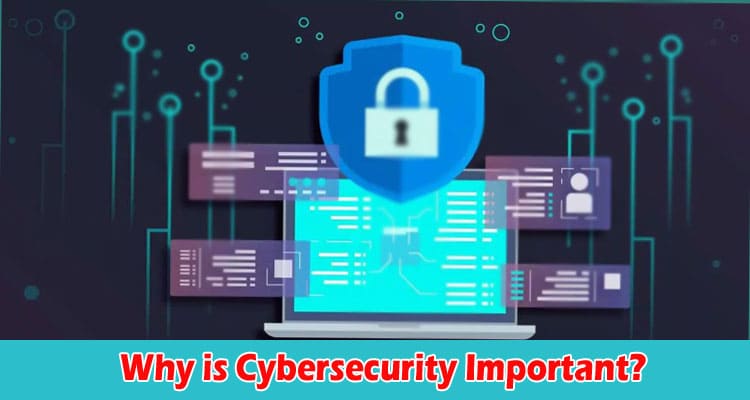In today’s hyper-connected digital landscape, where data is the lifeblood of businesses and individuals alike, cybersecurity stands as an indispensable shield against a myriad of threats. From large enterprises to individual users, all of us handle sensitive data, protected health information (PHI), personally identifiable information (PII), intellectual property, and government and business information systems. The critical importance of cybersecurity lies in its ability to protect this invaluable data from theft, loss, and exploitation.
In this article, we will explore why cybersecurity is so important and provide insights into ensuring its effectiveness in safeguarding your data.
The Pervasive Threat Landscape
The digital revolution has brought unprecedented opportunities and convenience, but it has also opened the floodgates to a wide array of cyber threats. Cybercriminals are constantly devising sophisticated tactics to exploit vulnerabilities in networks, applications, and human behavior. From malicious malware and ransomware attacks to phishing scams and zero-day exploits, the threats we face are diverse and ever-evolving.
The stakes are high for businesses and individuals alike. For organizations, a successful cyberattack can result in data breaches, financial losses, legal liabilities, and reputational damage. For individuals, the repercussions can range from identity theft and privacy invasion to financial fraud and emotional distress.
Safeguarding Sensitive Data
One of the primary reasons cybersecurity is crucial is its role in protecting sensitive data. Data is an invaluable asset that drives business operations, informs decision-making, and serves as the backbone of innovation. However, without adequate protection, data is vulnerable to unauthorized access, theft, or loss.
For businesses, sensitive data can include customer information, financial records, trade secrets, and proprietary research. For individuals, it comprises personal details, financial data, health records, and more. A successful breach can lead to devastating consequences, ranging from financial theft to identity fraud.
Safeguarding information assets requires a multi-layered approach that includes robust firewalls, intrusion detection systems, encryption, and access controls. Regular security audits and employee training are also essential to maintain a strong defense against data breaches.
Protecting Government And Business Information Systems
In the digital age, governments and businesses rely heavily on information systems to store, process, and manage critical data. From government agencies to private enterprises, protecting these information systems is paramount to ensure the smooth functioning of essential services and safeguard national security.
A breach in government or business information systems can have far-reaching consequences, compromising national security, economic stability, and public trust. Cybersecurity measures such as network segmentation, user authentication, and real-time monitoring play a pivotal role in securing these vital systems.
The Growing Threat Of Cyber Espionage
Cybersecurity is not only about protecting sensitive data; it also involves safeguarding intellectual property from cyber espionage. Companies invest significant resources in research and development to create innovative products and services. Unfortunately, cybercriminals and nation-states actively engage in cyber espionage to gain unauthorized access to valuable intellectual property.
Whether it’s stealing trade secrets, proprietary algorithms, or design blueprints, the theft of intellectual property can result in financial losses, loss of competitive advantage, and damage to a company’s reputation. Implementing strong security measures, such as data encryption, two-factor authentication, and behavior analytics, is essential to safeguarding intellectual property from cyber espionage.
Securing Personally Identifiable Information (Pii)
Personal data is a goldmine for cybercriminals, making PII a prime target. PII includes information like names, social security numbers, addresses, and biometric data that can be used for identity theft, phishing attacks, and other fraudulent activities.
Businesses that handle PII must comply with data protection regulations like GDPR (General Data Protection Regulation) and CCPA (California Consumer Privacy Act). Implementing encryption, access controls, and regular data audits can help prevent unauthorized access to PII and ensure compliance with data protection laws.
Promoting A Culture Of Cybersecurity Awareness
Even the most advanced cybersecurity technologies can be undermined by human error. Cybersecurity awareness and education play a pivotal role in creating a secure digital environment. From recognizing phishing attempts to using strong passwords, employees and individuals need to be well-informed about cybersecurity best practices.
MDM SSO (Mobile Device Management Single Sign-On) is a system that allows users to access multiple applications or services with a single set of login credentials on mobile devices. It integrates Mobile Device Management functionalities with Single Sign-On technology, streamlining user authentication and enhancing security in enterprise environments.
Organizations must invest in regular cybersecurity training for their employees, emphasizing the importance of data security and the potential consequences of negligence. Additionally, individuals should stay vigilant and adopt good cybersecurity habits, such as keeping software updated, using multi-factor authentication, and being cautious about sharing personal information online.
Cybersecurity is not just an option; it is an imperative in today’s interconnected world. It serves as the fortress that safeguards all types of data against theft and loss, protecting businesses, individuals, and even national security. From sensitive data to government information systems, the risks are immense, and the consequences of a breach can be catastrophic.
To ensure effective cybersecurity, organizations and individuals must embrace a multi-layered approach that combines advanced technologies, stringent access controls, and a culture of cybersecurity awareness. By staying vigilant, informed, and proactive, we can collectively create a safer digital landscape for everyone.







